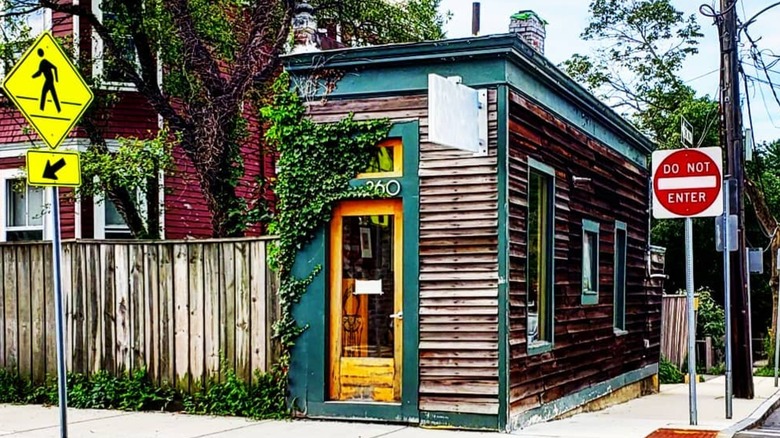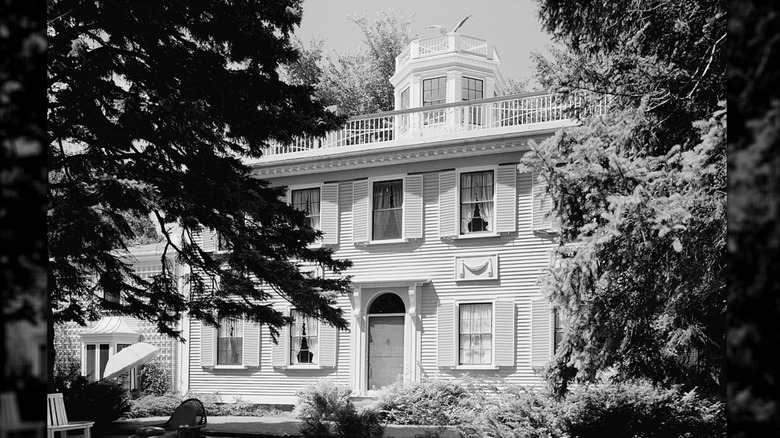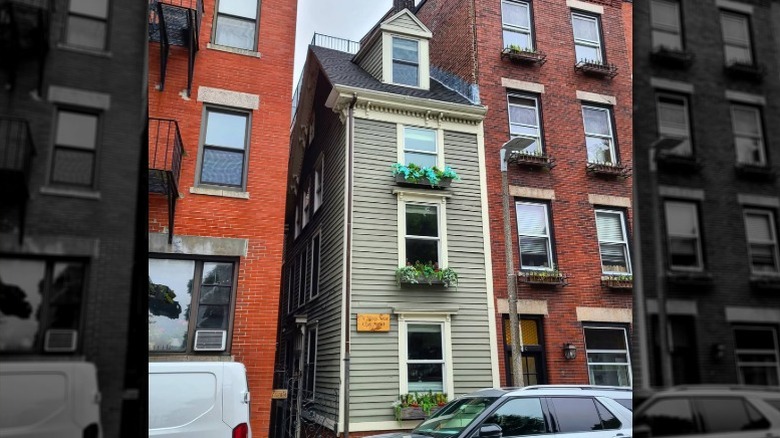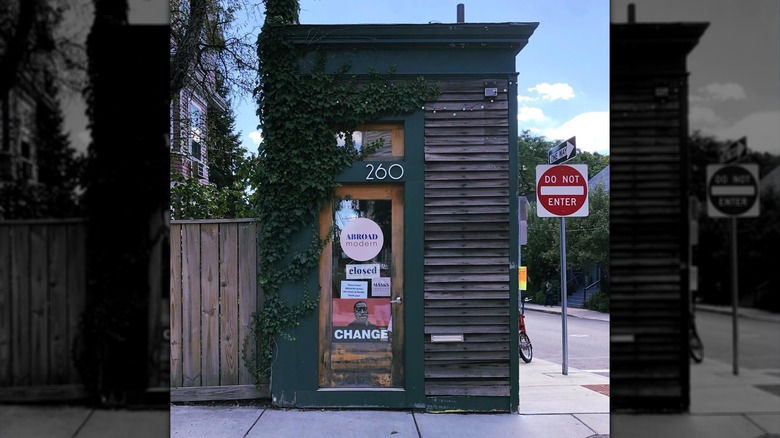New England's Quirky 'Spite Houses' Are A Bizarre Architectural Move Built To Make A Bold Statement
When it comes to revenge, nothing is more permanent than a spite house. Intentionally built to spite and annoy neighbors, spite houses are the architectural equivalents of a lover's spat gone overboard. These quirky, awkwardly proportioned homes in bizarre positions are the result of petty arguments, familial falling outs, or land disputes between neighbors.
Spite houses have existed for centuries and were built with the intent to limit a neighbor's views, block sunlight, restrict access, or drive home a point in the most blatant and permanent way possible. Dating back to an era when modern building restrictions, zoning laws, and urban planning had yet to be properly and widely established, these bold architectural statements existed to annoy and exacerbate while staying within the bounds of legality and building loopholes, making them all the more petty, vengeful, and endlessly intriguing. Here's a look at three New England-based spite houses that, whether based on fact or fiction, have captivated curious onlookers through the years.
Rockport Spite House in Maine stems from family dispute
Located along Maine's coast, which is dotted with secluded harbors and seaside villages, the Rockport Spite House is a shining example of a spite house born from family drama and dispute. The story starts with a Federal-style mansion built by wealthy shipbuilder James McCobb for his second wife in Phippsburg, Maine, where his children from his first and second marriages lived together. His son from his first marriage, Thomas McCobb, embarked on a voyage at sea after his father's death, but a harsh reality awaited him when he returned in 1806: The will of his father had been manipulated, and the mansion had been claimed by his brother-in-law.
Out of spite, McCobb built a new mansion that upstaged his original family home in size and standing. Dubbed the Spite House, it stood facing the childhood home that had been wrongfully taken away from him. Upon Thomas McCobb's death in 1815, the Spite House stayed in the McCobb family until 1915, when it changed hands. In 1925, native Philadelphian Donald Dodge purchased the home, which had deteriorated over the years. The entire Spite House was loaded onto a barge to travel the 85 miles northeast from Phippsburg to its new site in Rockport, Maine.
Boston's Skinny House is a tale that can't get its facts straight
Boston is home to historic squares with lively street scenes and coveted Paris-inspired neighborhoods. It's also home to a spite house, whose legend dates back to the end of the Civil War. And like all spite house stories go, it involves — unsurprisingly — a brotherly spat. It is said that one brother returned from battle to find a rather large house had been erected on the plot of land bequeathed to him and his brother as a shared property. As it was built without his consent, the war veteran brother retaliated by building the now-famous skinny house, whose purpose was to block the light from entering his brother's new home.
While this is a tale of architectural spite at its finest, Business Insider hints at a different version backed by a 1920 article printed in the Boston Globe broadsheet. Written by an unnamed author, the article calls out the controversial abode a "legend" and refers to the feuding parties as neighbors instead of brothers. The Boston Public Library's Digital Collections map of the city shows 44 Hull Street as an empty lot in 1852, while the G.M. Hopkins & Co. 1874 map of Boston indicates the Skinny House's location as part of a wider property belonging to a certain Thomas Caswell. In 1888, a Harvard Library map shows the property divided into three, with number 44 belonging to an owner surnamed Schiaffino.
Though the truth behind the fiction may not be as spiteful as it is made out to be, the Spite House still draws curious tourists to its doorstep for its scandalous legend. Even more scandalous? The price this 10-foot-wide home was sold for in 2021: a cool $1.2 million.
O'Reilly Spite House was born from a deal gone sour
The famous college town of Cambridge bears the unfortunate reputation of hosting the ugliest building in America, but it also boasts a quirkier architectural offering — the O'Reilly Spite House, which has become quite a neighborhood legend. For Francis O'Reilly, building a tiny 308-square-foot home was the biggest revenge he could unleash on his neighbor. It was said to have been built due to his neighbor's refusal to purchase his small parcel of land. Measuring just 37 feet long and 8 feet wide, the quirky dwelling, erected in 1908, still stands to this day.
Located at 260 Concord Avenue in Cambridge, Massachusetts, the quaint building was occupied by a design firm that claimed to have moved their "big idea to the smallest commercial space in Cambridge, the beloved O'Reilly Spite House." If anything, this spite house is cute as a button with its green trim and wood-slatted façades — the complete opposite of the ugly, hostile eyesore it was originally intended to be.



